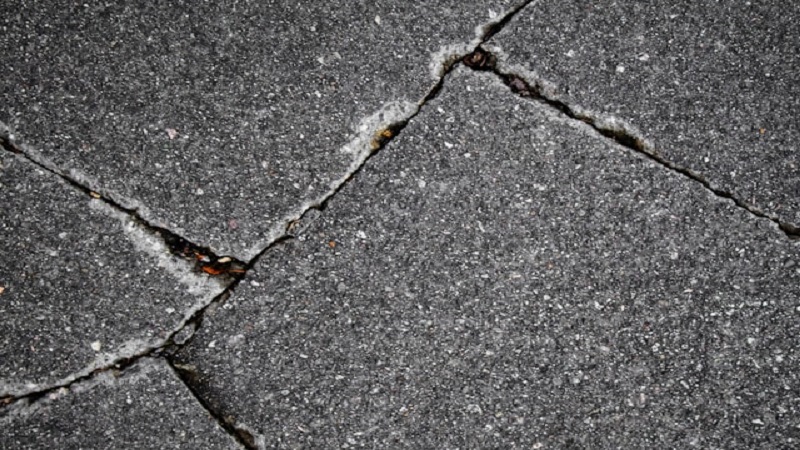When installing tile, one of the most frustrating issues people face down the line is cracking. You invest time and money into a beautiful tiled surface, only to see it start to fail due to something hidden beneath. That’s where uncoupling membranes come into play. These systems quietly work behind the scenes, protecting tile installations from stress, movement, and moisture. Whether you’re a DIY enthusiast or a seasoned contractor, understanding how these membranes work can make all the difference in how long your tiled surfaces last.
What Are Uncoupling Membranes?
Uncoupling membranes are protective layers installed between the subfloor and tile. Their job is to absorb movement and isolate the tile from any shifts happening underneath. Without this layer, tiles are left to deal with all the expansion, contraction, and stress that naturally happens over time in buildings — and that usually ends in cracking.
These membranes are designed with unique structures that allow a slight bit of movement between the subfloor and the tile, which is key. They often include features like air channels for vapor management and pockets for better bonding.
Why Tiles Crack — And How Membranes Help
Most people think tile cracks because of impact or wear, but the real culprit is often structural movement. Subfloors can expand and contract with temperature changes, moisture, or settling — especially in new constructions or areas with fluctuating humidity. Since tile and grout are rigid, they’re not built to flex with that movement.
Uncoupling membranes act as a buffer. They decouple the tile layer from the subfloor, which absorbs and disperses any movement, keeping that stress away from the tile itself.
The Main Benefits of Using Uncoupling Membranes
The most obvious benefit is crack prevention. But the advantages go beyond that. These membranes also:
- Improve overall durability and life span of tile installations
- Offer waterproofing properties (especially helpful in wet areas)
- Manage vapor coming from the subfloor, protecting tile adhesion
- Add a small layer of insulation for improved energy efficiency in heated floors
Using one is like putting your tile system on a shock absorber. It smooths out the stress before it can cause damage.
Different Types of Uncoupling Membranes
There’s no one-size-fits-all solution here. Different types of uncoupling membranes serve different project needs:
- Sheet membranes: These often come as rolls of dimpled plastic or fabric-backed sheets. They’re widely used due to ease of installation.
- Fabric membranes: Made of non-woven materials, these offer good flexibility and bonding strength.
- Liquid-applied membranes: These are brushed or rolled on like paint and harden into a flexible layer. They’re ideal for unusual or tight areas.
Choosing the right type depends on your subfloor, moisture levels, and project size.
Where Should You Use Them?
While uncoupling membranes aren’t necessary for every tile job, there are certain situations where they’re highly recommended:
- Bathrooms, kitchens, laundry rooms — basically any wet area
- Over concrete or plywood subfloors that might expand or contract
- Large format tile installations that are more prone to stress cracking
- Areas with in-floor heating systems
- Basements or ground-level slabs with potential moisture issue
Think of it as insurance. If there’s any risk of movement or moisture, it’s worth including a membrane.
How to Install an Uncoupling Membrane
Proper installation makes all the difference. Here’s a simplified rundown of the process:
- Prep the surface: Make sure the subfloor is clean, dry, and level.
- Apply thin-set mortar: Use a notched trowel to spread a layer that matches the membrane’s requirements.
- Lay down the membrane: Press it firmly into the mortar, smoothing out air pockets.
- Seal edges and seams (if applicable): Some types require special tape or waterproofing layers.
- Install tile on top: Once cured, you can begin tiling using the appropriate mortar.
Always check the manufacturer’s guidelines — there are small differences between brands and styles that matter during installation.
What to Watch Out For
Mistakes during installation can undo all the benefits. Avoid these common errors:
- Skipping proper surface prep
- Using the wrong type of thin-set mortar
- Not embedding the membrane fully into the mortar
- Overlapping seams incorrectly or not sealing them where needed
Taking shortcuts here can lead to bond failure or leave gaps that allow moisture to cause problems down the line.
Tools and Materials You’ll Need
Getting the job done right means using the right tools. Basic items include:
- A notched trowel sized for your membrane
- Mixing bucket and paddle for mortar
- Utility knife or scissors to cut the membrane
- Chalk lines or measuring tape for layout
- Margin trowel or float for pressing the membrane into place
Simple tools, but critical for accuracy.
Uncoupling Membranes and Radiant Heating Systems
If you’re installing heated floors, uncoupling membranes can work right alongside them. Many types are designed to allow heating wires to fit into their structure, providing both thermal efficiency and crack prevention.
Not only do they hold the wires in place securely, but they also ensure heat is distributed evenly, without compromising the tile layer.
Durability and Long-Term Maintenance
Once in place, uncoupling membranes require no special upkeep. They’re built to last as long as the tile does, sometimes even longer. Regular tile maintenance — cleaning and sealing grout if needed — is all you’ll need.
Top Membrane Features to Look For
Not all membranes are equal. When comparing options, consider:
- Thickness and flexibility
- Waterproof or vapor management properties
- Compatibility with floor heating
- Ease of cutting and installation
- Bonding strength with common mortars
Knowing your project’s demands will help you pick a membrane that fits — and performs.
Environmental Considerations
Some membranes are made using recycled materials or low-VOC manufacturing processes, which can help contribute to eco-friendly building standards. If sustainability matters in your project, look for options that align with green certifications.
Situations Where You Might Skip One
There are cases where an uncoupling membrane might not be necessary. For example:
- On small, stable interior floors with minimal movement
- Over old tile surfaces that are already bonded well
- When using tile adhesives that include flexibility features
Even then, it’s usually best to consult a professional to confirm.
Tips for a Flawless Install
Want better results? These tips help:
- Dry-fit everything first to plan layout
- Always back-butter large tiles
- Use leveling systems to reduce lippage
- Don’t rush — let the mortar cure properly before grouting
A little extra care goes a long way in the quality of the final surface.
Key Takeaways
- Uncoupling membranes are essential for protecting tile from cracks caused by movement or moisture.
- They create a buffer between tile and subfloor, allowing for flexibility and durability.
- Ideal for wet areas, large format tile, radiant heating, and unstable substrates.
- Proper installation is critical — and worth the effort for a long-lasting result.
Frequently Asked Questions
Do I need an uncoupling membrane for every tile floor?
No, but it’s highly recommended for areas prone to moisture, heavy traffic, or subfloor movement.
Can uncoupling membranes be installed over plywood or concrete?
Yes. They work well over both surfaces, provided proper prep is done.
Is a special mortar needed?
Most require modified thin-set mortar, but always check the manufacturer’s guidelines.
How thick are uncoupling membranes?
They typically range from 1/8″ to 1/4″, depending on the type and brand.
Are uncoupling membranes waterproof?
Many are, but not all. Always verify if waterproofing is required for your application.

